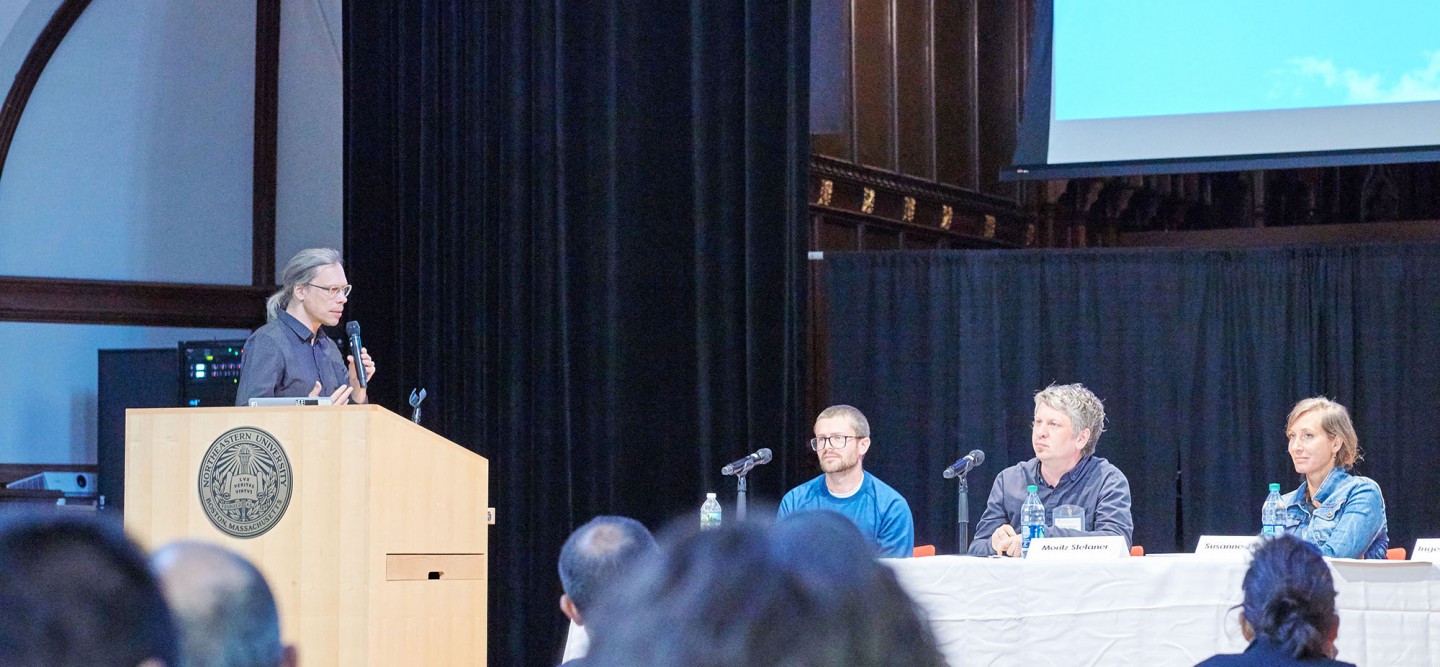Northeastern University’s recent Indexical Design Symposium brought together thought leaders from around the world to explore new areas of work and to share their unique and global perspectives. The symposium proposed “Indexical Design” as a new paradigm for data visualization that is specifically relevant for fields that deal with traces, markers, and indices – fields such as microbiology, forensics, or citizen science. The Symposium’s goal was to bring together experts from these very fields, as well as others, who have interesting research and ideas to share about reading traces and physical evidence. Presenters ranged from forensic scientists dealing with fingerprinting and DNA signatures, artists who work with material forms of information, environmental activist investigating pollution, and biologists trying to find new representations to explain the life of microbes.
Organized by Northeastern’s MFA in Information Design and Visualization, the country’s first program of its kind, the Symposium explored the physical trace and its role for making sense of the world, while also investigating the different scientific, aesthetic, and rhetoric techniques for making traces “speak.” The MFA in Information Design and Visualization program, which broke new ground with its curriculum, is breaking new ground again by moving the visualization discussion beyond the symbolic into the material domain.
As part of the symposium, Northeastern also hosted a Data Cuisine workshop, which explored food as a means of communication and information expression. In other words, Data Cuisine addresses speculative questions such as “what is the taste of data?”
“This symposium and workshop emerged out from a paper that I wrote with Orkan Telhan, a colleague from University of Pennsylvania, because we were puzzled by so much focus in the visualization community on reading diagrams and charts, but so little effort focused on reading physical traces,” explained Dietmar Offenhuber, Assistant Professor at Northeastern in the departments of Art + Design and Public Policy. Dietmar’s own work deals with how we capture (urban) realities in data, how we represent these data sets, and how these representations influence how we govern our cities.
“One of our intentions here in the Department of Art + Design is to craft an approach to the study of design that will bring us full circle to a holistic, human centered, integrative practice. Indexical design provides a pivot point and fulcrum for doing that,” said Nathan Felde, Professor and Chair of the Art + Design Department in the College of Arts, Media and Design at Northeastern. “We intend to ground our understandings in evidence of lived experience. We hope this enables us to better shape our intentions and inform our actions. Perhaps this work can even yield richer shared meaning to our collective human experience.”
Panelists at the Symposium included: Mortiz Stefaner, German data visualization specialist; Jens Hauser, Paris-and Copenhagen-based art curator, writer, cultural journalist, and film maker; Paul Dourish, from the University of California Irvine, computer scientist best known for his work and research at the intersection of computer science and social science; and Simon A. Cole, also from the University of California Irvine, who specializes in the historical and sociological study of the interaction between science, technology, law, and criminal justice. Be sure to check out some highlighted presenters on YouTube!
Thank you to event partners Goethe Institut, specifically Christoph Mücher and Annette Klein, as well as swissnex Boston, specifically Cecile Vulliemin and Arthur Emery.


